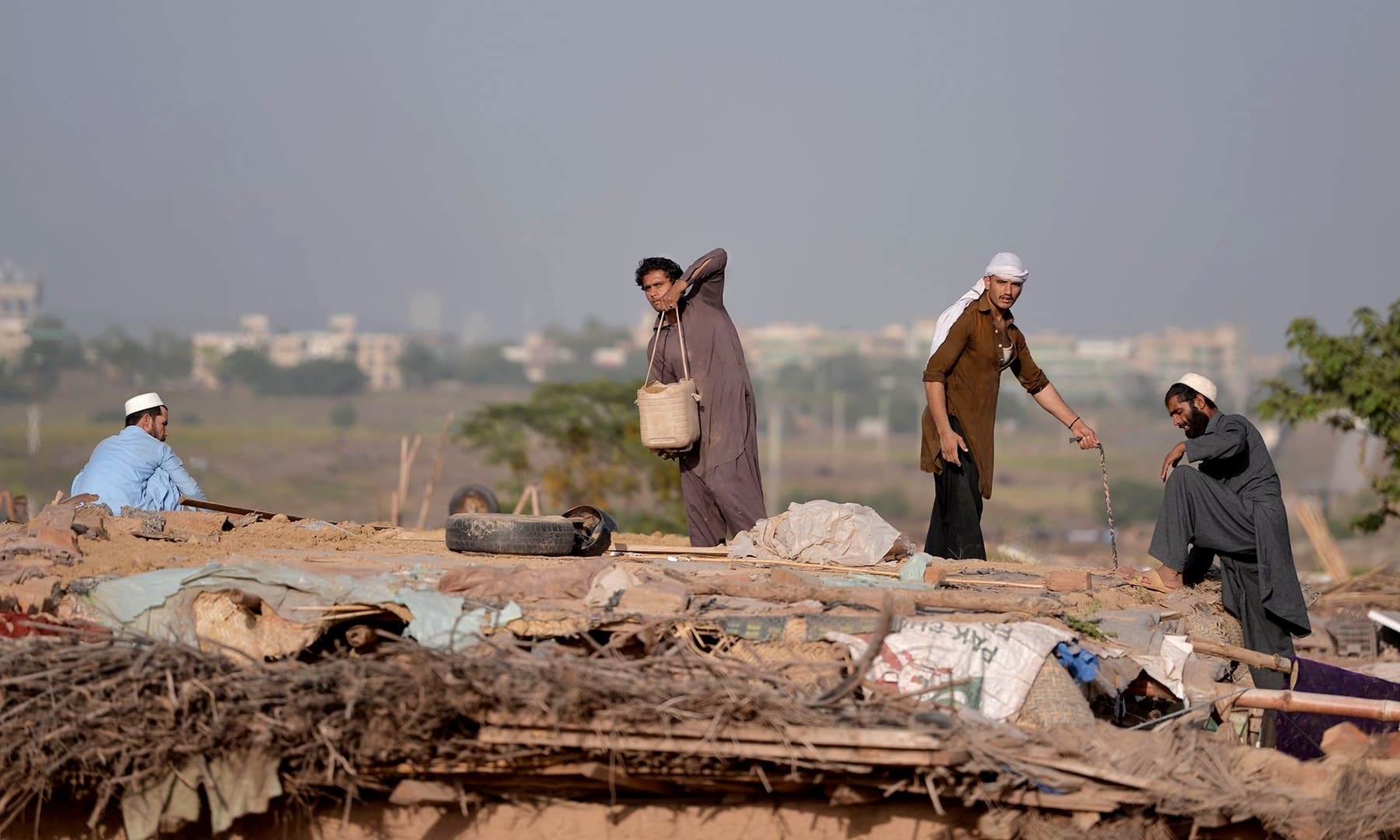Pakistan may emulate Iran over refugee influx

• High-level team to visit Tehran, study Iranian model
• Minister rules out opening of border with Afghanistan
• Officials fear fresh influx can boost sectarian outfits
ISLAMABAD: As the withdrawal of American and Nato troops from Afghanistan enters its final phase and the Taliban make more territorial gains, an influx of refugees into Pakistan seems inevitable. But this time around, Islamabad appears not in favour of opening its border, and instead is ready to look into the ‘Iranian model’ if the situation demands.
“We have decided not to open our border for refugees; the aid agencies can help the needy on the other side too,” Interior Minister Sheikh Rashid Ahmed told Dawn.
“But, if the situation deteriorates, we will establish settlements along the border with strict control and monitoring, prohibiting the entry of refugees into the mainland,” he went on to say.
“The government would even follow the Iranian model to contain refugees in these camps and manage them effectively,” he added.
According to a report of the United Nations High Commission for Refugees (UNHCR), there were around 800,000 Afghan refugees in Iran, but they were all living in refugee villages set up by Tehran along the border areas with Afghanistan in the 1980s and prevented from settling in cities and towns.
Read: UN readies for more displaced Afghans after troop withdrawal
A senior government official, on the other hand, confirmed that Prime Minister Imran Khan had raised the issue during his telephonic conversation with the Iranian president-elect Ebrahim Raisi on Sunday evening.
PM Khan, while congratulating Mr Raisi on his victory in the recently-held elections, expressed concern over the worsening security situation in Afghanistan, saying its repercussion could be felt both in Pakistan and Iran.
“During their discussion on Afghanistan, both sides agreed to work on the Iranian model,” the official said, adding that, “it has been decided that a high-level team comprising officials from the interior ministry, security establishment and other relevant departments would visit Iran soon to understand the successful implementation of the model.”
At present there are two key border crossings between Pakistan and Afghanistan — Chaman in Balochistan and Torkham in Khyber Pakhtunkhwa — besides several small trading points. Most of the border with Afghanistan has been fenced, making illegal movement difficult.
On the other hand, Chief Commissioner for Afghan Refugees Saleem Khan said currently the situation on the border was not alarming, but if it deteriorated, international organisations and donor agencies would inform Islamabad.
Mr Khan said though Pakistan was not a signatory to the UN Convention of Refugees 1951 and the 1967 Refugee Protocol, the country still had been a responsible neighbour and hosted over three million Afghan refugees for more than four decades.
“Besides, it is a laudable achievement that there has been no tension between locals and Afghan refugees in Pakistan; all refugees are treated equally in government hospitals and education institutions in Pakistan,” the chief commissioner said.
“There are even international cricket players in Afghanistan who learnt the game in various Pakistani sports academies and centres,” he added.
Saleem Khan was of the opinion that a comprehensive policy needed to be devised after taking all stakeholders, including provinces, into confidence.
Talking to Dawn, officials from various provinces and even Gilgit-Baltistan showed their concern over the arrival of Afghans in their areas, but declined to be named.
“Our most serious fear is that the Afghans might add to the strength of sectarian terrorists, who had been subdued by the army,” an elected representative in the Gilgit-Baltistan Assembly said.
Similar views were expressed by a cabinet member in the Sindh government, who said most refugees would arrive in Karachi, but the city’s civic amenities were already overstretched, with many areas facing law and order problems.
On the other hand, a senior government official said though Pakistan was worried about the humanitarian issues confronting the region, including Afghanistan, there were several other factors that need to be considered.
“We have to keep note of our economic and political situation, social aspects and security problems before taking any decision,” the official said, adding that the decision to allow entry of Afghan nationals fleeing the fighting cannot be seen in isolation.
On the other hand, sources in the security establishment said there were other concerns too in the current scenario.
“Opening of the border could facilitate movement of Pakistanis wanting to support the Taliban either as fighters or in logistics, a security official said.
He cited the example of how even women from Pakistan tried to travel to territories controlled by the militant Islamic State group in Syria and Iraq.
“This leads to the spread of violent religious extremism in the country,” the official said, adding that the security establishment could also not ignore the fact that a large number of Afghans who arrive would be jobless and might get involved in the politics of ultranationalists in Balochistan and Khyber Pakhtunkhwa, like the Pashtun Tahaffuz Movement (PTM).
Meanwhile, UNHCR Pakistan spokesperson Qaiser Khan Afridi said the agency was in the country to support the government in case of an influx of Afghans.
He said the UNHCR was “observing the situation closely in the region and hoped that peace and stability will be fully achieved in Afghanistan through dialogue”.
Mr Khan said: “A political solution should be favoured instead of conflict, but the risk of further displacement exists and we need to be prepared.”
There are around three million Afghan nationals living in Pakistan, out of which 1.4 million are holders of the proof of registration card (PR Card), followed by about 850,000 who have Afghan citizen cards while up to half a million were unregistered persons mostly living in remote areas, doing menial jobs or were nomads or herders.
Published in Dawn, July 6th, 2021













































